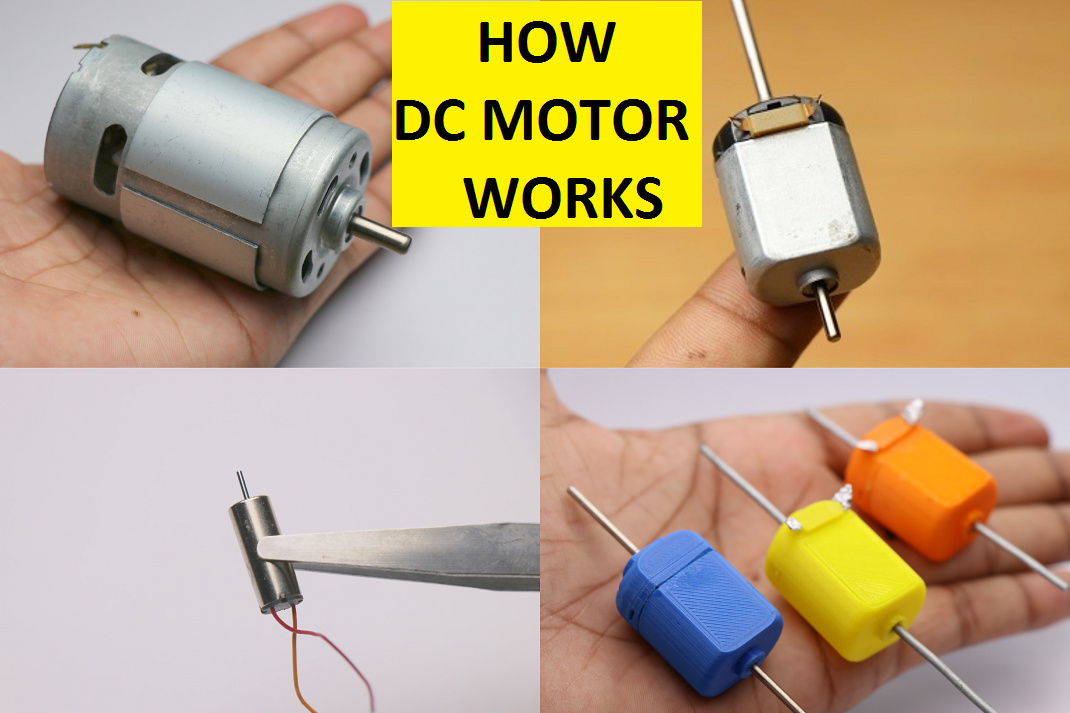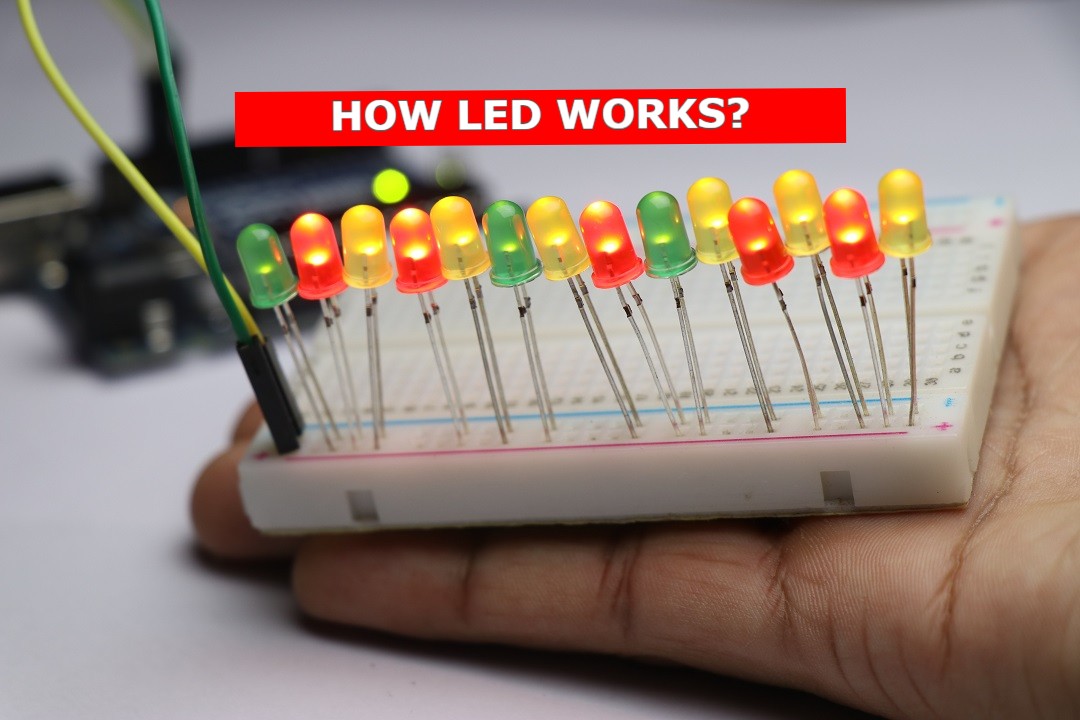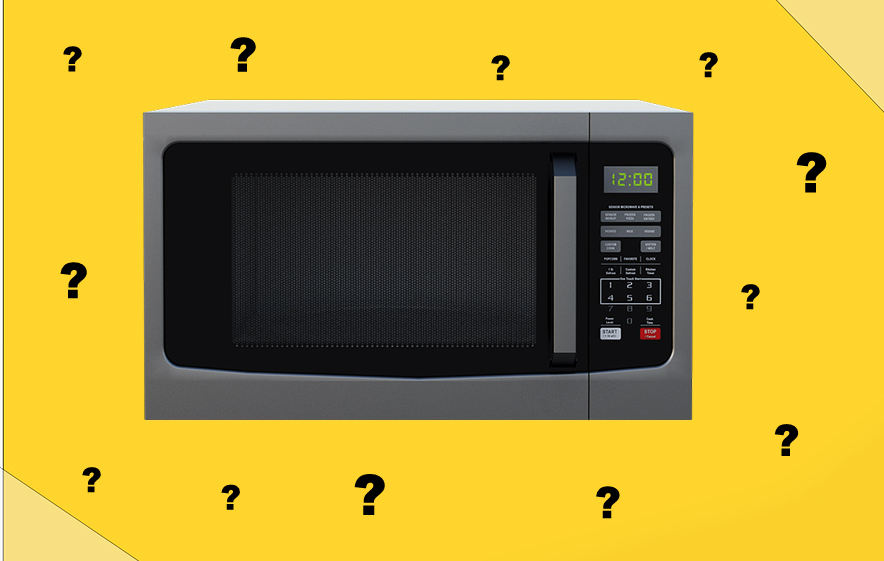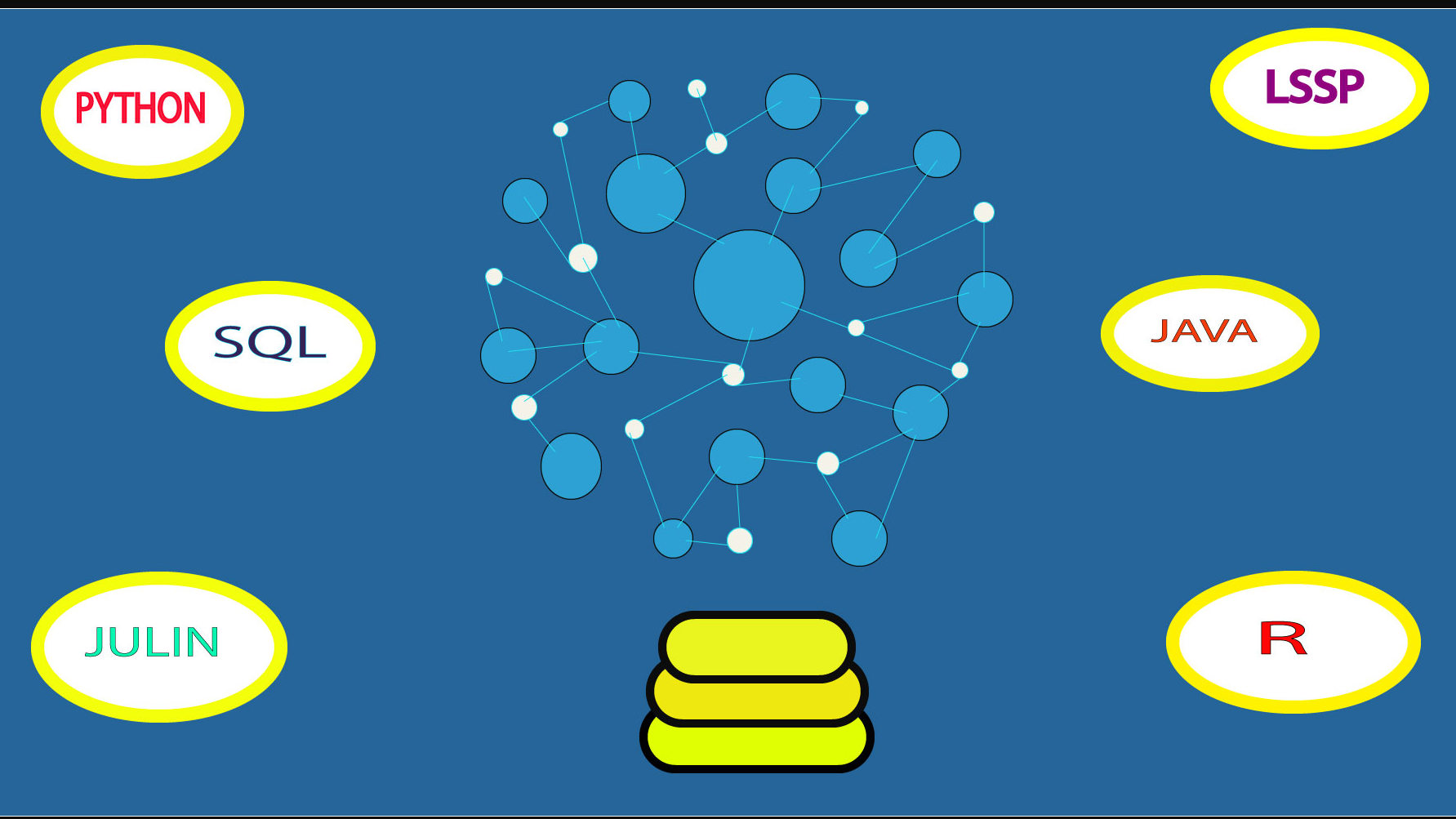How Does a DC Motor works

Ever wonder How Does a DC Motor works on those cheap little plastic toys that you buy from tiny toy shops move around? Well, they use electric motors.
That’s not the only application of electric motors as they are everywhere. Anything you see which has a mechanical movement is power by DC (Direct Current) motor.
In this article of “How It Works?” we will be discussing how DC motors work!
What Is A DC Motor?
Well known machine that transforms electrical energy into mechanical energy. The input electrical energy of a DC motor is direct current, which is convert into mechanical rotation.
History
The first DC motor development took place around 1830. They were commercially unsuccessful because these motors were battery-power and batteries were still very expensive and the quality was low.
These were overcome by creation of electrical grid and rechargeable batteries
In late 1800s first commercially viable DC motors came into the market.
DC motors have been improve continuously, but other types of motors, like the BLDC motor, have been develop in the meantime too.
As a result, the use of brush Direct Current motors in several applications is limited today.
Definition
A DC motor is a type of electric motor that converts electrical energy into mechanical energy using direct current.
We can conclude from the preceding definition that a DC motor is an electric motor that runs on a direct current (DC).
In the next sections, we’ll learn about DC motor construction and how a DC motor turns DC electrical energy into mechanical energy.
For visual definition on How Does a DC Motor works you can refer video at the end
Different Parts of motor
Armature or Rotor Cylinder made up of magnetic laminations that are separate from one another is armature of dc motor.
The armature is perpendicular to the cylinder’s axis. An air gap separates the armature from the field coil, which rotates on its axis.
Field Coil or Stator A non-moving element on which winding is wound to produce magnetic field known as DC motor field coil. Between the poles of this electromagnet is cylindrical hollow-out space.
DC motor’s commutator which is cylindrical device made of copper segments stack together
Mica-insulation done from one another to avoid shorting
That’s principal duty is to supply electrical current to the armature winding.
Brushes A DC motor’s brushes are made of graphite and carbon structure.
Electric current will travel from the external circuit to the revolving commutator by these brushes.
As a result, we can deduce that the commutator and brush unit is responsible for passing power from the static electrical circuit to the mechanically revolving region, or rotor.
How a D.C Motor Works
The rotor is usually on the inside of the motor, whereas the stator is on the outside.

Coil windings supply by DC are found in the rotor, whereas permanent magnets or electromagnetic windings are found in the stator.
A magnetic field is form within the stator when the motor is power by DC, attracting and repelling the magnets on the rotor.
The rotor begins to rotate as a result of this commutator is use in the motor to keep the rotor moving.
The rotor would stop spinning when it aligned with the magnetic field, but the commutator would reverse the current through the stator, reversing the magnetic field.
Working Principle
A current-carrying conductor gains torque and tends to move when kept in a magnetic field.
In other words, when electric and magnetic fields collide there will be some mechanical force. This is the basis on which DC motors operate.
Types of motor
DC motors are used in a wide range of products, from electric toothbrushes to vehicles.
They are divide into distinct categories depending on the field winding connections to the armature as:
- Self-Excited DC Motor
- Separately Excited DC Motor
Now, let us discuss these types of DC Motors in detail.
Self-Excited DC Motor The field winding will be link in series or parallel to the armature winding in self-excited DC motors therefore be divide as follows
Shunt-wound DC motor In this type of motor, the field winding in a shunt-wound motor is connect parallel to the armature.
Series wound DC motor The field winding is connect in series with the armature winding in this type of motor
Compound wound DC motor Compound DC motors are those that have both shunt and series field winding, as indicated in the diagram.
The compound motor are further subdivide into following categories
Cumulative Compound Motor and Differential Compound Motor
The magnetic flux produced by both windings in a cumulative compound motor is in the same direction.
The flux produce by series field windings in a differential compound motor is the polar opposite of the flux produce by the shunt field winding.
Separately Excited DC Motor The field coils of an independently excited DC motor are power by an external DC supply.
Brushed DC Motor vs Brushless DC Motor
In a brushless DC motor, the commutator takes over with an electronic servo mechanism that detects and adjusts the rotor angle.
But in brushed DC motors, brushless DC motors, also known as synchronous DC motors, do not include a commutator.
A commutator in a brushed DC motor reverses the current every half cycle, resulting in single-direction torque. While brush DC motors are still prevalent, many have been replaced in recent years by more efficient brushless ones.
Applications of DC Motors
Shunt DC Motors:
They have fairly constant speed and medium starting torque. They’re mostly use in
- Centrifugal and reciprocating pumps
- Lathe machines
- Blowers and Fans
- Drilling machines
- Milling machines
- Machine tools
Series DC Motors They have high starting torque and variable speed hence in
- Conveyors
- Hoists, Elevators
- Cranes
- Electric Locomotives
Cumulative Compound DC Motors They have high starting torque hence suitable for
- Shears
- Heavy Planers
- Rolling mills
- Elevators
Watch Video on How does a DC motor works
Thank you for reading How Does a DC Motor works, I hope you understood How a D.C motor works. If you have any doubts about DC Motors, please do ask in the comment box below.



